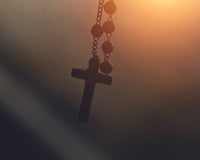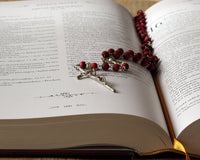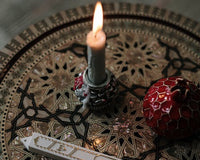Menorahs are one of the most well-known and long-lasting symbols of the Jewish faith. However, there are several interesting facts about this symbol and what it represents that people are not aware of that will help them appreciate its history.
1. The Hanukkah Lamp or Temple Menorah?
While the Hanukkah lamp (which has nine branches) is inspired by the temple menorah, they are not technically the same exact thing. The menorah has seven branches and was the candelabrum used in The Holy Temple in Jerusalem (and prior to that, the Tabernacle). The Temple menorah was crafted of pure gold and held the oil that miraculously lasted for eight days. This, in turn, inspired Hanukkah, with two additional branches added to the Hanukkah lamp (one for each night, and an extra candle to light the others). So even though they are symbolically related, the Hanukkah lamp and the Temple menorah are technically different.
2. Candles Aren’t Required
This might be a surprising entry since the menorah is most frequently depicted as having candles within its branches. However, there are menorahs that are crafted with places you can put not only candles but oil. The Temple menorah was traditionally fueled by olive oil (this was the very oil that miraculously burned for eight days). For this reason, some customs favor olive oil over candles, especially for personal use, with candles sometimes favored for the synagogue’s menorah.
3. Windows and Doorways are Important
In more ancient times, many houses were built to face courtyards. When this was the case, it was tradition to ensure the menorah was at the courtyard entrance. It was typically placed on the left of the entrance, with the mezuzah being on the right. Some say that the placement of these two icons on the right and left created what is known as a mitzvah-filled portal. Eventually, the menorah’s placement moved indoors, but many still prefer to put it at a window (though some still light it inside of their doorways like the courtyard entrances of old).
4. The Time the Candles Should Be Lit
It is a common custom that the candles of the menorah be light at a specific time: shortly after the sun sets. There are other communities that light their menorahs more specifically closer to 30 minutes after sunset, however. The exception to this rule is on Friday, when the menorah should be lit before the Shabbat candles and before sunset, and on Saturday night it is lit after nightfall. That all applies to personal menorahs. For a menorah at a synagogue, they must to be lit before sunset in accordance to when the Temple menorah was historically lit.
5. Specific Blessings and Prayers Should Be Said
Two blessings should be said before the menorah is lit. The first thanking God specifically for the mitzvah of the menorah, and the second should speak tribute and recognize His miracles. Additionally, before the first lighting of the menorah every year, thanks for the opportunity to celebrate Hanukkah should be offered up by saying the shehecheyanu.
If you are interested in a deeper history and more interesting facts about the menorah, learn more here.






